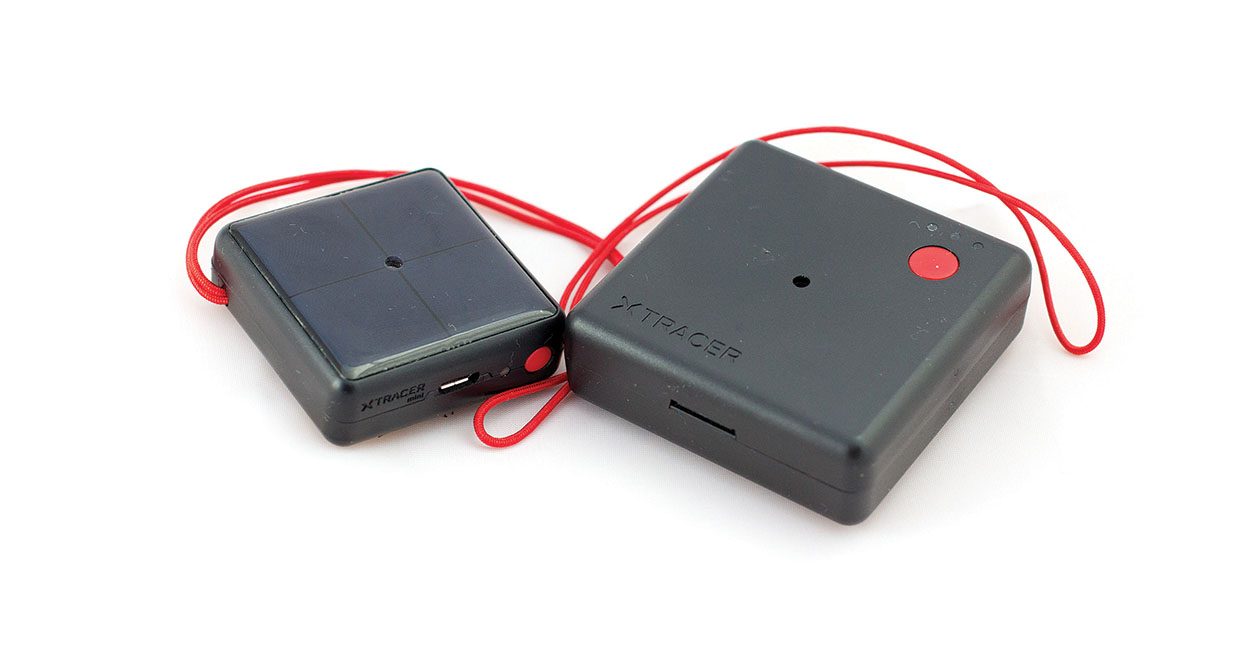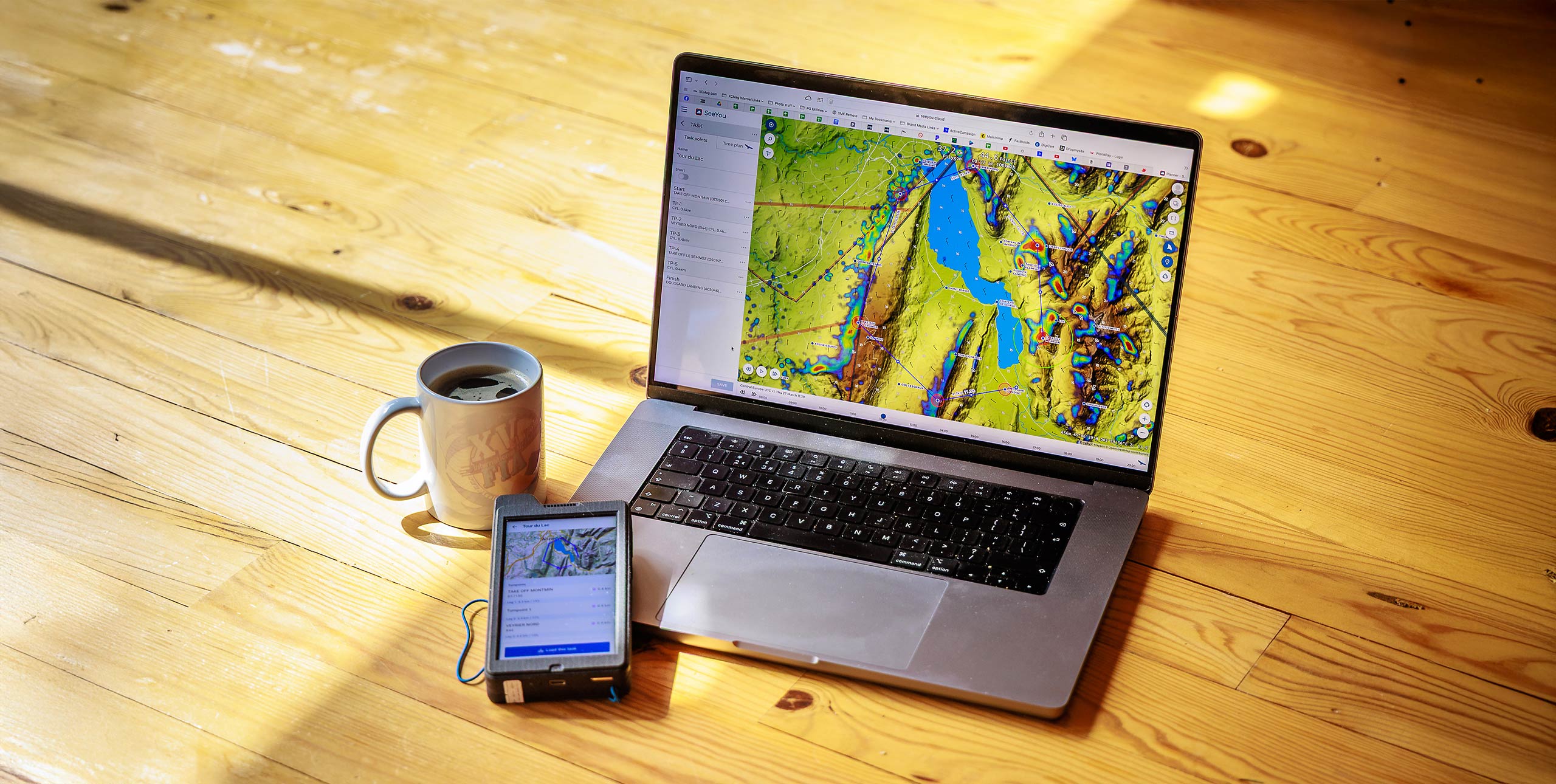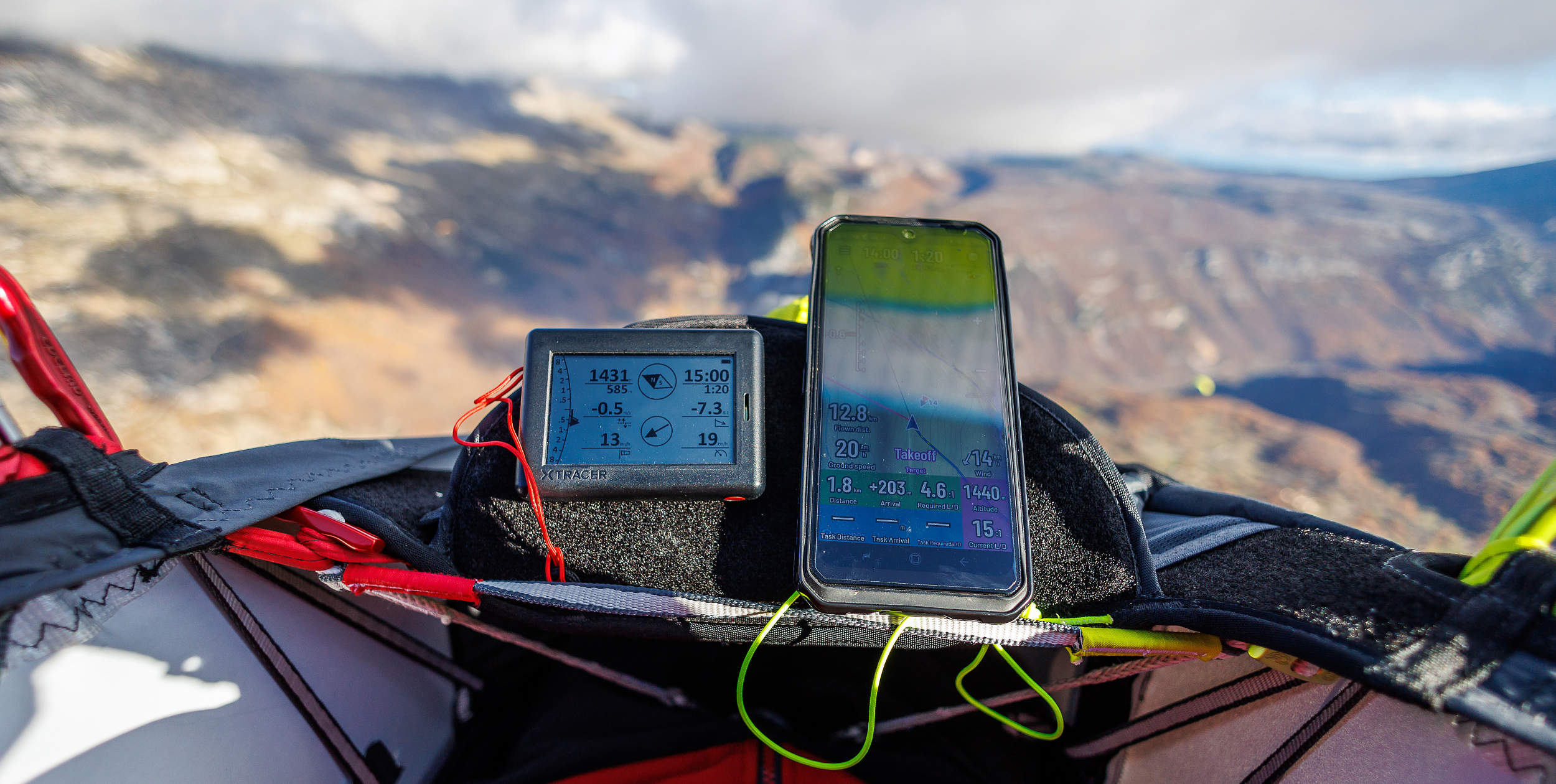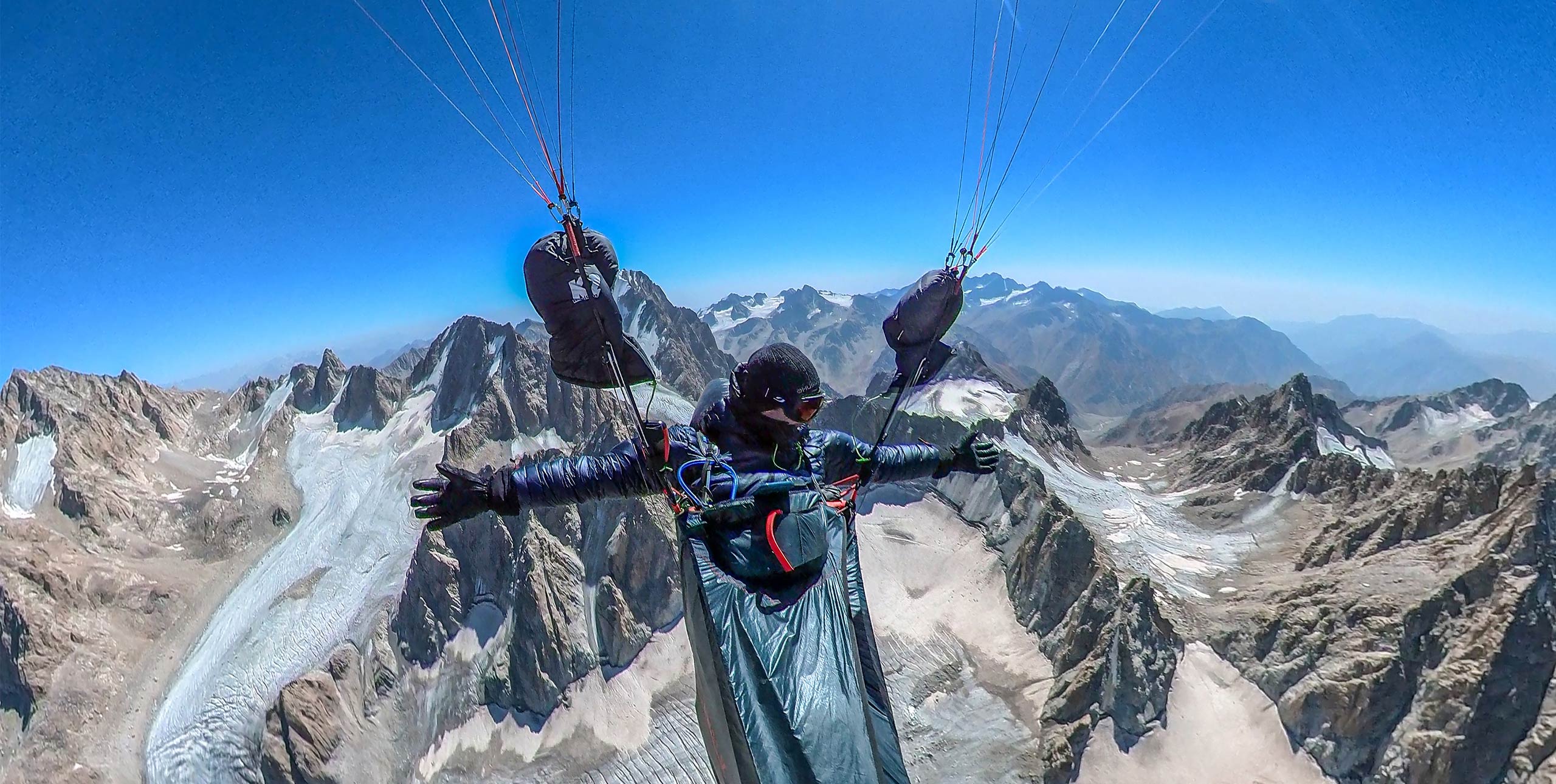
SINCE WE have been throwing ourselves off hills we have been using air pressure to give us an indication of altitude and rate of climb. In your flight instrument, electronic sensors measure the rate-of-change of air pressure, from which climb rate can be calculated.
Early varios used a simple needle display with a corresponding audio signal. As things went digital designers were able to do more, adding averagers and energy compensation. But everything still relied on a pressure sensor. The better quality (ie expensive) the sensor, the more sensitive the vario.
That was until Swiss pilot and and designer Koni Schafroth announced the XC Tracer project. The XC Tracer, launched to the flying public by way of an Indiegogo campaign, differs from a traditional vario by making use of data from an ‘attitude heading reference system’. That’s a chip with GPS, accelerometers and gyroscopes, like you can find in smartphones. This data is then combined with the pressure data to give a vario that has no lag.
The unit is a simple-looking black box with a single red button, a couple of status lights, a micro-SD slot and a mini-USB socket – that’s it. There’s no display and no buttons to control it with. The red button is used to switch it on/off and further presses control the volume, with four settings you can cycle through. The battery is claimed to last for 15 hours and we have found that it kept going for long flights. That might all sound rather simple for a €295 unit, but there’s a lot more within.
Inside is a logger that can store 5,000 hours worth of data. This can be saved as a signed IGC file for uploading to online leagues at one-point per second, or as a KML file at an even finer five-points per second. (As the unit cannot have routes programmed into it there is no way of recording C-records for defined flights.)
When you plug the XC Tracer into your computer using a USB cable it is simple to grab your flight logs. Plugging it in also gives you access to the configuration file, a simple text file that can be easily edited on your computer. This gives you plenty of control over the unit’s behaviour. This includes customising the audio settings, which gives you a lot of control over how the device indicates lift and sink.
There is even an online audio editor that allows you to graphically edit the profile and preview it on your computer; it will then generate the config file for you. You can also find some pre-made profiles from other users that make good starting points for your own configuration.
Updating the firmware is a really simple operation: it’s just a case of copying the latest file to the device and then powering off and back on.
The final piece of technology is a Bluetooth low energy (BLE) module that allows you to connect to a tablet or smartphone. This means the accurate vario and GPS data can be used as a source for an app such as XCSoar or FlySkyHy. Kobos can be retrofitted with a BLE module to make them connect wirelessly, or you can use a USB link.
Recently the XC Tracer has been joined by a smaller sibling in the shape of the XC Tracer Mini. The Mini forgoes the logger and Bluetooth connections but adds a solar panel for power. Designed as an audio-only backup device or lightweight unit for hike-and-fly, it uses the same technology and has the same amount of control over the audio. One user note is it should be attached to the risers or harness, not your helmet as head movements can cause it to react. The solar panel will keep it running in normal conditions and the battery is capable of powering it for up to 12 hours without sunlight (good for those long, midnight soaring flights).
So what is it like to fly with? The lack of lag is immediately noticeable as soon as you hit your first thermal. No longer do you get that gap between feeling the lift through your hips and the vario starting to chirp. It’s the same when you fall out of lift: a conventional vario lags behind and keeps beeping even after you have fallen out; the XC Tracer reacts immediately.
What is probably more important is how it reacts to changes in the lift within the thermal. The tone changes instantly and to smaller changes than you might even feel, making it easier to map the thermal in your head. While not so important in a strong thermal, in a wide weak thermal it really comes into its own, and could well be the difference between going down and staying up. Of course, how important all this is to you will depend on how much you use the audio input and how much you feel thermals through the brakes and risers.
On the default audio settings I did find I missed the ‘buzzer’ pre-thermal indicator, but this is easy enough to replicate with some adjustment of audio configuration, so it is worth setting it to your own preferences. Interestingly, UK reseller Tim Pentreath sent me his audio setup in which he has sound across the whole sink spectrum, which he feels gives him vital information on glide. I certainly found it useful when feeling less sinky lines without the annoying solid sink alarm you get from some units when you set the sink threshold high. Tim’s audio settings can now be found online on the audio editor in the cloud section.
Overall this vario brings a new level of information to your flying. Despite being very responsive it is in no way nervous; it just precisely lets you know what the air is doing. It may take a little getting used to, and on the latest firmware for the mini you can dampen the response.
Other manufacturers have now started to use these sensors, so we can expect to see this idea being used more widely. Flymaster, for example, have already added an ‘Instant Vario’ to their instruments.
If you are using a software instrument this makes a great add-on, giving you precise data, great audio and a logger. Even if you have a full vario/GPS this makes a great backup logger and you may find you prefer the audio from this device.
The Mini meanwhile brings the same great responsiveness to the hike-and-fly audio-only market in a tiny package that you can fit to your harness and forget.
Reviewed by Marcus King
****
In Brief
XC Tracer
Size: 57.5 x 57.5 x 19.25mm
Weight: 61g
Battery life: 14+ hours
RRP: €295
XC Tracer Mini
Size: 44.5 x 44.5 x 16.5mm
Weight: 30g
Battery Life: Solar panel + 8-12 hours
RRP: €170
Online: XCTracer
To stay up to date and read our reviews first, subscribe to Cross Country










